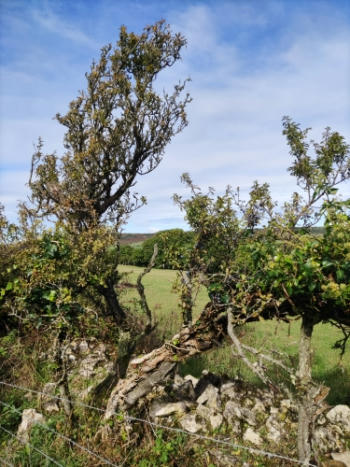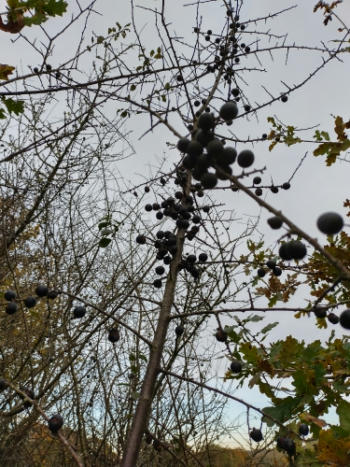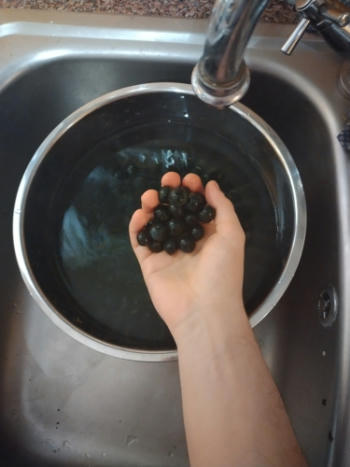Sloes
Sloes are the fruit of the blackthorn. They are similar to their close relatives bullace and damson, though I've never worked out where a large sloe ends, and a bullace begins. No one is likely to complain about the two being mixed up though.
Habitat & Identification
Blackthorn is a large shrub, common in hedgerows and at transitions between woodland and grassland. It is therefore very common to find by the sides of paths, particularly surrounding the older field borders and settlements. It can grow in a wide variety of conditions, but seems to thrive in exposed areas near to water, but that don't become boggy. Shallow valleys and nearby old ditches seem to be favourites.
Blackthorn has long thorns, though some are larger or smaller and some plants have fewer or more. Presumably selectively breeding blackthorn to act in its traditional role as a way of containing livestock has led to some varieties being significantly thornier.

In the spring, blackthorn bushes paint hedgerows in brilliant white as winter ends. They are one of the first plants to flower, and do so before their leaves have grown. This is one of the easiest times of year to spot blackthorn, as long as you remember where they were by the time autumn arrives.
Their leaves are dark green, and shaped like slim ovals with serrated edges. From a distance, they are most readily identifiable by the crooked shapes of their branches, though several shrubs look indistinguishable, especially in the winter when they have no leaves.

Luckily, sloes are very easy to identify. They are roughly 15mm spheres that are either matte blue-grey, or glossy navy-blue, becoming darker if they are wet, and as they ripen. The amount produced by any one tree can vary wildly, from only a dozen or so per tree, to thousands. Sometimes the number varies by tree, but sometimes the conditions are right in a particular area, and a large group of trees all produce an abundance.
Picking and Eating
Traditionally, sloes are harvested after the first frost of the year, though in Southern England, the season is usually ending by this time. The longer they are left on the tree however, the sweeter they generally become. Near the end of the season, the fruit can begin splitting apart on the tree.

The flesh of the sloes ranges from yellow-green to orange-red. It is usually very tart then eaten raw. Mostly, I use them for /recipe/fruit-wine, but they can also be used to flavour gin and other spirits, or for making jams. The deep red colour they impart seems to mostly come from the skins of the sloes.